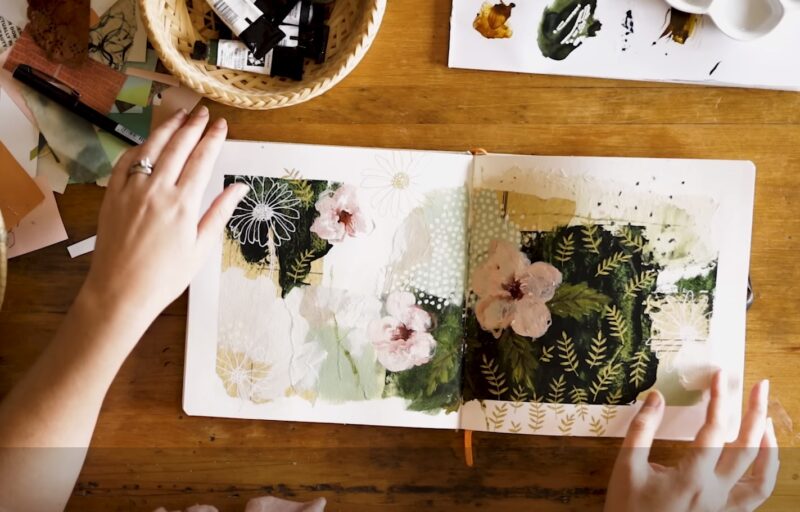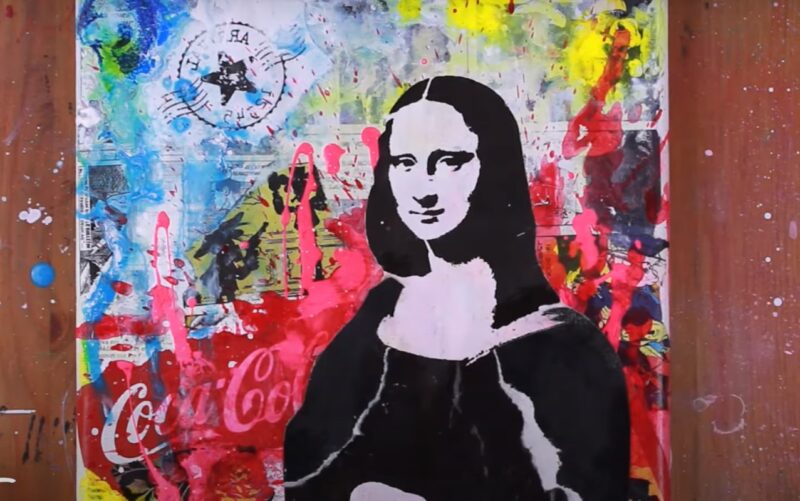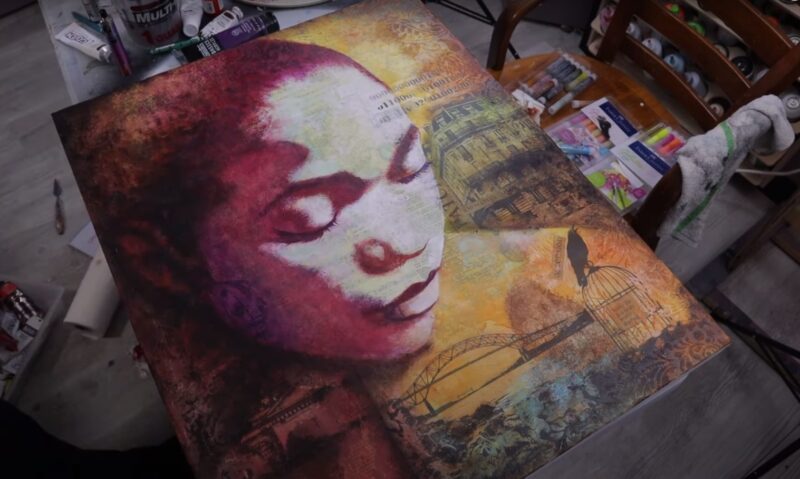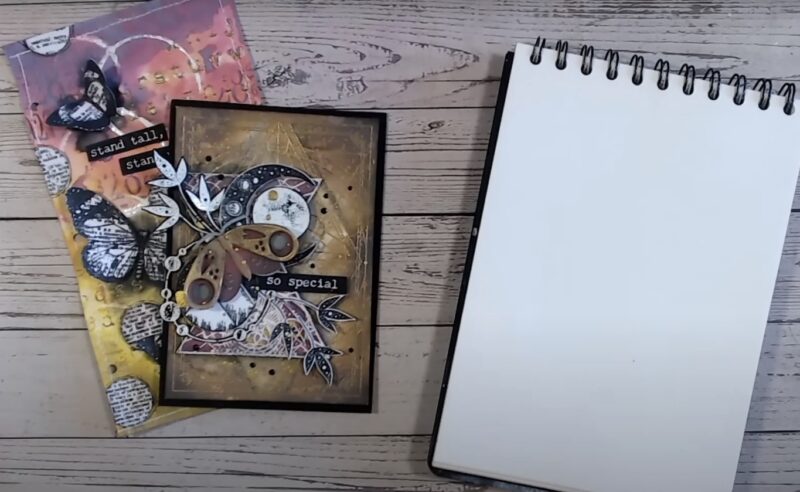Mixed media art, a fusion of diverse materials and techniques, challenges traditional art boundaries by combining elements like paper, paint, and digital media. This article explores the essence and accessibility of mixed media art, tracing its evolution from early 20th-century movements to its current form.
We examine various materials and techniques, highlighting how mixed media differentiates itself through its unique visual elements. The thematic richness of this art form, reflecting identity, culture, and history, is also explored, alongside a focus on prominent artists who have shaped its legacy.
Finally, the article discusses the showcasing of mixed media art in galleries and online, emphasizing its importance in contemporary art. Mixed media art emerges as a dynamic reflection of the innovation and societal change.
Key Takeaways
- Versatility and Innovation: Mixed media art stands out for its versatility, allowing artists to merge various materials like paper, paint, and digital media, fostering innovation and a break from traditional art forms.
- Historical and Cultural Reflection: This art form is not just an artistic expression but a reflection of historical and cultural shifts. Its evolution from the early 20th century to the present day mirrors societal changes, making it a dynamic medium that encapsulates different eras and movements.
- Creative Freedom and Experimentation: Artists working with mixed media have the freedom to experiment with textures, colors, and shapes, pushing the boundaries of creativity and offering a unique visual experience.
- Thematic Richness: Mixed media art is particularly effective in conveying complex themes such as identity, culture, and history, due to its ability to combine various elements and layers in a single artwork.
- Digital Era Influence: The advent of the digital era has further expanded the scope of mixed media art, allowing artists to incorporate digital elements, thereby creating hybrid works that are contemporaneous and innovative.
- Challenges in Preservation: While mixed media art offers vast creative possibilities, it also poses unique challenges in terms of preservation due to the diverse materials used, each with its degradation rate and chemical properties.
What Is It?

Mixed media art uniquely fuses various materials, techniques, and media within a single piece, contrasting with traditional art forms that typically employ just one medium, like painting, sculpture, or photography. This art form invites artists into a realm of exploration and experimentation, reminiscent of the uninhibited creativity often seen in children.
This notion echoes Pablo Picasso’s insight:
All children are artists. The problem is how to remain an artist once he grows up.
This artistic approach has numerous advantages. It nurtures creativity and innovation, opens up a plethora of creative possibilities, and mirrors the world’s diverse and intricate nature.
However, mixed media art also presents certain challenges, including the need for extensive planning, potential technical complexities, and at times, facing misunderstanding or criticism. Beyond these aspects, mixed media art serves as an inclusive and multifaceted form of expression, suitable for a broad audience.
It functions effectively as an educational tool, a means to convey social and cultural narratives, and as a source of both inspiration and enjoyment.
What Are Its Historical Origins?

Mixed media art emerged in the early 20th century as a result of the artistic experimentation and innovation that characterized the modernist era. Some of the key artists and movements that influenced mixed media art were Pablo Picasso and Georges Braque, who introduced collage and assemblage in their cubist works; Marcel Duchamp, who challenged the conventional notions of art with his ready-made; and the Dadaists and Surrealists, who used collage and photomontage to express their radical and irrational views.
It evolved throughout the 20th and 21st centuries, reflecting the social, political, and cultural changes of different eras. For example, the Pop Art movement of the 1950s and 1960s used mixed media to incorporate mass media and consumer culture into their artworks; the Feminist Art movement of the 1970s and 1980s used mixed media to address issues of gender and identity; and the Postmodern Art movement of the 1980s and 1990s used mixed media to question the boundaries and definitions of art.
What Materials and Techniques Define the Genre?
Mixed media art involves the use of various materials and techniques to create a single artwork. Common materials used in mixed media art are paper, fabric, wood, metal, plastic, clay, paint, ink, glue, and wax.
Some of the common techniques used in mixed media art are collage, assemblage, decoupage, transfer, stamping, and stenciling. Mixed media art can take different forms and styles, such as abstract, realistic, figurative, geometric, or organic.
Some examples of mixed media art are:
- Joseph Cornell’s boxes are assemblages of found objects, photographs, and ephemera arranged in wooden boxes.
- Romare Bearden’s collages are compositions of cut and pasted paper, fabric, and paint that depict scenes of African American life and culture.
- Robert Rauschenberg’s combines, which are hybrid artworks that incorporate painting, sculpture, photography, and everyday objects.
- Anselm Kiefer’s paintings are large-scale canvases that incorporate materials such as straw, ash, lead, and glass to create textured and layered surfaces.
What Are Its Distinctive Features?

Mixed media art and multimedia art are both forms of art that use more than one medium, but they have some differences. It refers to the combination of different materials and techniques within a single artwork, such as collage, assemblage, or painting.
Multimedia art refers to the use of different media and technologies across different artworks, such as video, audio, or digital. Mixed media art has some distinctive features and advantages, such as:
- It allows the artist to experiment and innovate with various elements and create unique and original artworks.
- It reflects the diversity and complexity of the world and the artist’s reality and identity.
- It offers a wide range of possibilities and outcomes for the artist and the audience.
Who Are Some Prominent Artists?
Mixed media art is a creative form that combines different materials and techniques, such as painting, collage, sculpture, photography, and digital media. The artists often explore the boundaries of art and challenge the conventional notions of what art can be.
Here are some of the prominent and influential mixed media artists of the past and present:
- Pablo Picasso (1881-1973): Picasso was a Spanish artist who is widely regarded as one of the most influential figures of modern art. He experimented with various styles and media, such as cubism, surrealism, and collage. He is known for his innovative use of found objects, such as newspaper clippings, cardboard, and metal, to create expressive and dynamic compositions. Some of his famous mixed media works include Guitar (1912), Still Life with Chair Caning (1912), and Guernica (1937).
- Robert Rauschenberg (1925-2008): Rauschenberg was an American artist who pioneered the concept of “combines”, which are artworks that incorporate painting, sculpture, and everyday objects. He challenged the distinction between art and life and created works that reflected the social and cultural changes of his time. He collaborated with other artists, such as Jasper Johns, John Cage, and Merce Cunningham, and explored various media, such as photography, printmaking, and performance. Some of his famous mixed media works include Monogram (1955-59), Canyon (1959), and Retroactive I (1964).
- Yayoi Kusama (1929-): Kusama is a Japanese artist who is known for her psychedelic and immersive installations that feature polka dots, mirrors, and lights. She uses mixed media to create sensory and visual experiences that express her visions and obsessions. She also works with painting, sculpture, collage, and fashion. Some of her famous mixed media works include Infinity Mirror Rooms (1965-), Narcissus Garden (1966-), and Obliteration Room (2002-).
FAQ
Can mixed media art be considered sustainable or eco-friendly?
Mixed media art can be sustainable, especially when artists use recycled or upcycled materials. This approach not only reduces waste but also adds unique historical or contextual layers to the artwork.
How does mixed media art engage the audience differently compared to traditional art forms?
Mixed media art often offers a multisensory experience, engaging viewers on multiple levels. Its diverse materials and textures invite closer inspection and interaction, potentially creating a more immersive and thought-provoking experience for the audience.
Are there specific themes or subjects that mixed media art is particularly suited to express?
Mixed media art is well-suited for themes of complexity, diversity, and intersectionality. Its ability to blend various elements makes it ideal for expressing layered concepts, such as identity, social commentary, and cultural narratives.
How has the digital era influenced mixed media art?
The digital era has expanded the boundaries of mixed media art by incorporating digital elements and techniques. Artists now blend traditional materials with digital imagery, interactive components, and multimedia, creating hybrid works that reflect the digital age.
Is mixed media art more challenging to preserve than traditional art forms?
Preservation can be more complex for mixed media art due to the variety of materials used. Factors like differing rates of degradation, chemical interactions between materials, and the need for specialized conservation methods can pose unique challenges.
Final Words
Mixed media art, blending diverse materials and techniques, marks a revolutionary step in art history. This article has traversed the journey of mixed media from its early 20th-century roots to its modern-day prominence, highlighting its distinctiveness and thematic depth.
By integrating materials like paper, paint, and digital components, mixed media art transcends traditional boundaries, offering a rich tapestry of identity, culture, and history. Its evolution reflects societal changes, and the diverse techniques employed by artists demonstrate a limitless scope for creativity and expression.
If you’re intrigued by the ever-evolving world of art, follow us for more insightful content and updates on this dynamic art form.
